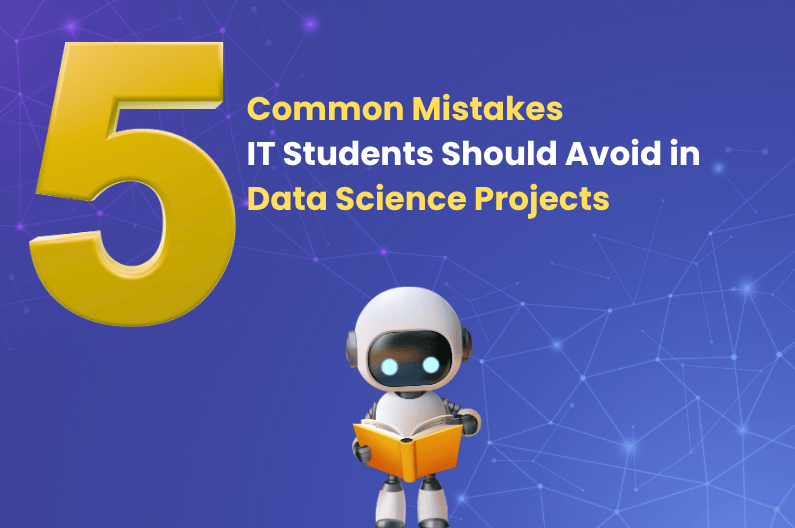How Not to Cluster: 5 Common Mistakes Nepali IT Students Should Avoid in Data Science Projects
Clustering is one of the foundational tools in a data scientist’s toolkit. For students and professionals in Nepal exploring data science, clustering often serves as their first exposureto unsupervised learning. However, when applied incorrectly, it can lead to confusing groupings and poor insights, especially when dealing with real-world, messy datasets like those found in local industries or online platforms.
Whether you’re pursuing a BSc CSIT, BIT, or a career-focused program with Sparkup IT Academy, understanding how to avoid key clustering mistakes will help you get better results, build a stronger portfolio, and make smarter decisions when working with Nepali datasets.
Understanding What Goes Wrong
The goal of clustering is to group similar items together based on their attributes. But the quality of these clusters depends on your choices, what data you feed into the model, how you process it, and which algorithm you choose.
Let’s explore the five most common mistakes made by data science learners and how to fix them.
1. Misusing PCA on Text Data
A common practice is to apply Principal Component Analysis (PCA) to reduce dimensionality before clustering, especially when working with TF-IDF or CountVectorizer outputs. However, PCA is designed for continuous numeric data and doesn't handle sparse, high-dimensional text data well. In the context of Nepali e-commerce, job listings, or reviews, PCA often removes critical features that define cluster quality.
Instead, use Truncated SVD, which works better with sparse matrices and retains the structure of text-based vectors. This method is particularly useful when analyzing Nepali datasets that involve product titles, customer reviews, or social media text.
2. Skipping Preprocessing Steps
Data from local sources, whether it’s scraped from platforms like HamroBazar, MeroJob, or Daraz, often contains duplicate entries, inconsistent terminology, and missing values. Failing to clean and prepare this data results in overlapping or meaningless clusters.
To improve accuracy, clean your data thoroughly. Normalize text, handle missing values, remove redundant features, and consolidate synonymous categories. For instance, if your dataset includes both "mobile" and "cell phone," unify them to improve cohesion. The more context you apply through preprocessing, the more meaningful your clusters will be.
3. Over-relying on K-Means
K-Means is a popular starting point, but it’s not suitable for every dataset. It assumes that clusters are spherical, evenly sized, and equidistant from one another. In real-life Nepali datasets, like customer segmentation for cooperatives or NGO project data, clusters often vary in shape and density.
Alternatives such as DBSCAN (for density-based clustering) or Agglomerative Hierarchical Clustering can provide better performance. These are particularly effective when working with unbalanced clusters or noisy data often found in local economic and demographic records.
4. Neglecting Evaluation Metrics
Many students visualize the clustering output and assume it works if the clusters look distinct. Visual inspection is not enough. Evaluate your models using quantitative metrics such as the Silhouette Score, Davies-Bouldin Index, or the Adjusted Rand Index (when labels are known).
These metrics help determine how compact and well-separated your clusters are, which is critical for making sound conclusions, especially when building models for retail optimization or logistics clustering.
5. Ignoring Domain Knowledge
Effective clustering doesn’t rely solely on algorithms, it requires contextual understanding. Nepali datasets often come with unique naming conventions, spelling inconsistencies, and mixed-language entries. Understanding how local businesses label their products, or how job roles are described, can significantly influence the quality of your features and final clusters.
For instance, in a dataset of tech job listings, clustering roles without accounting for terms like “Python developer,” “AI engineer,” and “machine learning expert” as similar profiles can skew your results. Building a domain-specific keyword list and involving subject matter experts adds significant value.
Practical Case Study: Clustering Products on a Nepali Marketplace
Imagine you are analyzing laptop listings on HamroBazar. You aim to group similar products together to detect duplicates or variations. Raw clustering using unprocessed text may group unrelated models or mix electronics with furniture due to noise in the feature space.
By applying TF-IDF, reducing dimensions with Truncated SVD, and cleaning the text to unify brand and model naming, you can apply KMeans or Agglomerative Clustering for meaningful segmentation. Proper preprocessing alone can significantly improve your silhouette score and model reliability.
Key Takeaways for Nepali IT Students
- Don't rely on default methods like PCA and KMeans without evaluating their suitability.
- Preprocess your data thoroughly, especially when dealing with unstructured text in Nepali or English.
- Choose clustering algorithms based on the nature of your dataset, not on popularity.
- Use evaluation metrics to validate your model’s output.
- Leverage local domain knowledge to engineer better features.
Apply What You’ve Learned
Take a local dataset, like job listings from JobsNepal and try clustering after preprocessing. Use Truncated SVD for dimension reduction, apply DBSCAN, and evaluate your silhouette score. Reflect on how your preprocessing choices changed the outcome.
Learn Data Science the Right Way with Sparkup IT Academy
If you're serious about mastering clustering and other data science techniques beyond just reading about them, Sparkup IT Academy’s Data Science and Machine Learning (DSML) course is built for learners in Nepal who want real-world skills, not just theory. This course goes beyond academic concepts and dives deep into industry-grade tools, project development, and career-building strategies.
With mentorship from experienced professionals, personalized feedback, and access to practical datasets including local Nepali data, you’ll gain the confidence to build a portfolio that speaks for itself.
Start your data science journey today with Sparkup IT Academy’s DSML program.
Learn more or enroll now at: https://www.sparkupitacademy.com/training/form

